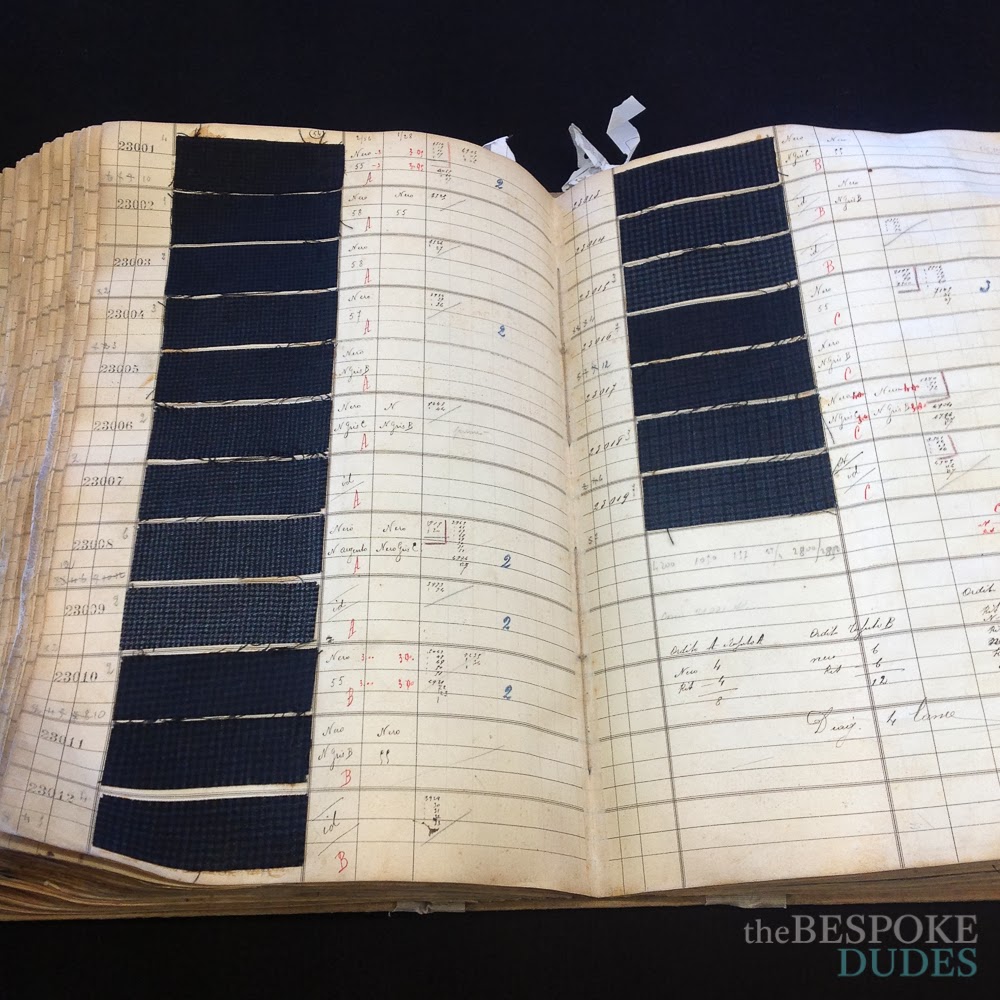Vertically integrated and in the heart of Biella. It’s Lanificio Cerruti, founded on the banks of the river Cervo in 1881 by Antonio Cerruti along with his two brothers. Today the woolen mill is a fundamental reference for the Italian textile industry, with three million meters of fabrics produced every year, 400 employees and 60 millions Euros of turnover, 3% of which spent in research and development.
Verticalmente integrato e nel cuore di Biella. E’ il lanificio Cerruti, fondato sulle rive del fiume Cervo nel 1881 da Antonio Cerruti insieme ai suoi due fratelli. Oggi è una fondamentale realtà del settore tessile italiano, con tre milioni di metri di tessuti prodotti ogni anno, 400 dipendenti e 60 milioni di Euro di fatturato di cui il 3% speso in ricerca e sviluppo.
The article - L'articolo
Nine thousand variations of fabric produced every year, all carefully stored in an archive dating back to the beginning of ‘900. The factory touts two main hearts: on one hand, the dyeing plant, with twelve thousand books of colours and the possibility of making any colour requested by the customer; on the other hand, the finishing, where the steps are careful, three times more, compared to other woolen mills. They offer a lot of variations of colours, don’t make long chains and produce a maximum of fifty thousand meters per customer. The research on the product is a strong point in this woolen mill. Sperimentation here is continuous. “When we realized the fabric in kevlar and cashmere, the machine fell apart.” – specifies Mr. Dritan Trimcev, Head of the technological sector.
Ben novemila varianti di tessuto prodotte ogni anno, tutte accuratamente conservate in un archivio che risale ai primi del ‘900. L’azienda ha due cuori principali: da un lato, la tintoria, forte dei dodicimila libri di colori e della possibilità di creare qualsiasi colore chiesto dal cliente nonché il finissaggio, dove viene effettuato il triplo dei passaggi di controllo rispetto ad altri lanifici. Offrono molte varianti di colori, non fanno catene molto lunghe e producono un massimo di cinquantamila metri per cliente. La ricerca sul prodotto è un grande punto di forza in questo lanificio. La sperimentazione qui è continua. “Quando abbiamo prodotto il tessuto in kevlar e cashmire, la macchina si è spaccata” mi specifica Dritan Trimcev, responsabile del laboratorio tecnologico.
75% of the processed wool here is dyed, the rough one is only 25%. It arrives here already washed and combed and several steps are followed to ensure its purity. The origin of the raw material? Tasmania for the wools, Mongolia for the cashmere, that is of three kinds: white, brown and light grey. The looms here are both air jet and with “pliers”, without cabin. At Cerruti they also respect the environment thanks to a co-generator burning vegetal oil to produce electric energy and two depurators, cleaning the waters coming from the river Cervo for hydroelectric energy.
Il 75% della lana lavorata qui è tinta, il grezzo invece è solo il 25%. Arriva in azienda già pettinata e viene sottoposta ad innumerevoli controlli tecnici per assicurarne la purezza. La provenienza delle materie prime? Tasmania per le lane, Mongolia per il cashmere, che è di tre tipi: bianco, marrone e grigio chiaro. I telai qui sono sia a pinza che ad aria, ma non sono cabinati. Da Cerruti rispettano anche l’ambiente grazie ad un cogeneratore che brucia olio vegetale per produrre energia elettrica e ben due depuratori che ripuliscono le acque del fiume Cervo per l’energia idroelettrica.
During my visit I have the pleasure to meet Mr. Nino Cerruti in person and his son Julian. Considered by many the pioneer of the menswear in Italy, Nino Cerruti is undisputedly a gentleman with great taste and big entrepreneurial vision. “You can’t have an excellent fashion, without an excellent fabric” – this is, reportedly, one of his famous statements, that I immediately write down on my jotter. During our short chat, we talk about the economic downturn, the labour market, the destiny of our Country, but also about how the fashion world has changed during the last thirty years. Twelve years ago, Nino Cerruti leaves the fashion industry - “because when I started the world was different.” – he explains. The concept by then was “make special things and bring them on the market in a special way”. Then big companies have brought fashion into chains of shops, that sell in series special products. “We went from the paintings to the litographies” – he says. The metaphor is particularly appropriate. Elegance for Mr Cerruti is harmony and personalization. The same shade of colour can suit a man and be completely improper for another gentleman. Finally, he highlights the importance of what we wear, because it influences our emotional sphere besides our health.
Durante la visita ho il piacere di conoscere sia Nino Cerruti in persona sia suo figlio Julian. Da molti considerato il pioniere del menswear in Italia, Nino Cerutti è indiscutibilmente un gentleman dotato di gran gusto e di una grande visione imprenditoriale. “Non si può avere un’ottima moda senza un ottimo tessuto” - questa una delle sue frasi celebri che mi vengono riportate dai suoi collaboratori e che mi affretto ad appuntare sul taccuino. Nella nostra breve chiacchierata parliamo di crisi, di mercato del lavoro, delle sorti del nostro paese, ma anche di com’è cambiato il mondo della moda uomo negli ultimi trent’anni. Ormai dodici anni fa, Nino Cerruti lascia il settore moda – “Perché, quando ho iniziato, il mondo era diverso” mi spiega. Il concept al tempo era “fare cose speciali e portarle sul mercato in maniera speciale”. “Le grandi organizzazioni, poi, hanno portato la moda in catene di negozi, che vendono in serie dei prodotti speciali”. - “Si è passati dai quadri alle litografie” - mi dice; la metafora è calzante. L’eleganza per lui è armonia e personalizzazione. Una stessa nuance di colore può essere adeguata ad una persona e risultare inelegante su un’altra. Sottolinea, infine, l’importanza di ciò che indossiamo, perché influisce sulla nostra sfera emotiva oltre che sulla nostra salute.
Julian, with “Natural Born Elegance”, his new-born men’s accessory line, focused on the pleasure of wearing a refined fabric, that is seasonless, timeless and entirely made in Italy. Hoddies and nightgowns in two-ply cashmere fabric for those who like to enjoy their time and work at home. Home office, as the Americans say. Products conceived for the gentlemen who love a relaxed quality, a luxury concept that is coherent with the West Coast spirit, where Julian has lived for twenty years. He only sells on-line, because the web still allows an immediate and dinamic access to his target market. At least there…
Ed è proprio sul piacere di indossare un tessuto pregiato che Julian ha incentrato la sua linea di accessori da uomo, Natural Born Elegance. Seasonless e timeless, interamente made in Italy. Felpe e vestaglie in cashmere due fili per chi vive molto la casa e per chi vi lavora. Home Office, come dicono negli States. Prodotti per chi ama la qualità rilassata, un concetto di lusso coerente con lo spirito della West Coast degli Stati Uniti, dove Julian ha vissuto per vent’anni. Vende solo sul web, che permette ancora un accesso immediato e dinamico al suo mercato di riferimento. Almeno lì…
If you like what we are doing here, please consider following TBD on Facebook - Tumblr - Instagram - Twitter
Bespoke Hugs,
Fabio
Company visit at... Lanificio Cerruti
20 Dicembre 2013







